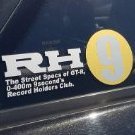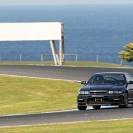R34 Gtr Build
Announcements
-
Similar Content
-
Latest Posts
-
She's looking good Greg. Colour suits it perfectly 👍
-
I had a look at the FAB9 EFR kit, around $8500 AU before delivery, so add in shipping, installation, consumables and tuning, I believe the price difference would be negligible And whilst I am paying top dollar at MX5 Mania, if I have any issues with the kit they are local for support, and from my experience, will happily go out of their way to help, hell, I've purchased parts from them and asked "how do I install or remove parts" and they have fitted a few of them for free, this means more to me than saving a few thousand dollars And yes, 99% of the time I just plod around in the car, that may change once I start hearing turbo whooshy noises, but, as I have 3 family members is the constabulary, even when I'm up it, it is only up to the speed limit, or occasionally, but rarely, overtaking on the Hwy (I just plod in the left lane typically and enjoy the drive) Plus the kids would never let it go if I got booked speeding, Jackie is constantly getting critiqued by the kids about her driving, which I think is hilarious, and tell them that she is "bringing shame to our family", so heaven forbid if I ever got done speeding, after all my mouthing off about her driving, I would never live it down, and it would be another thing she would bring up any chance she got Like the time I got drunk about 15 years ago and fell out of a cab, which gets brought up at least a few times every year since it happened Good times
-
By alburger87 · Posted
True, might get it looked at. Found out you can in fact flatten the 12v battery relatively easily too the other day (kids lefts the hazards on) so meaning to get that checked in the new year. What's odd is it'll blow cold from both vents if you have the ac down as low as poss (18), but anything else the passenger one blows warmish. Also has been summer since I got it obvs but noticed it didn't seem to want to blow hot last night when we had a cold snap.







Recommended Posts
Create an account or sign in to comment
You need to be a member in order to leave a comment
Create an account
Sign up for a new account in our community. It's easy!
Register a new accountSign in
Already have an account? Sign in here.
Sign In Now